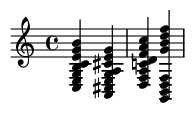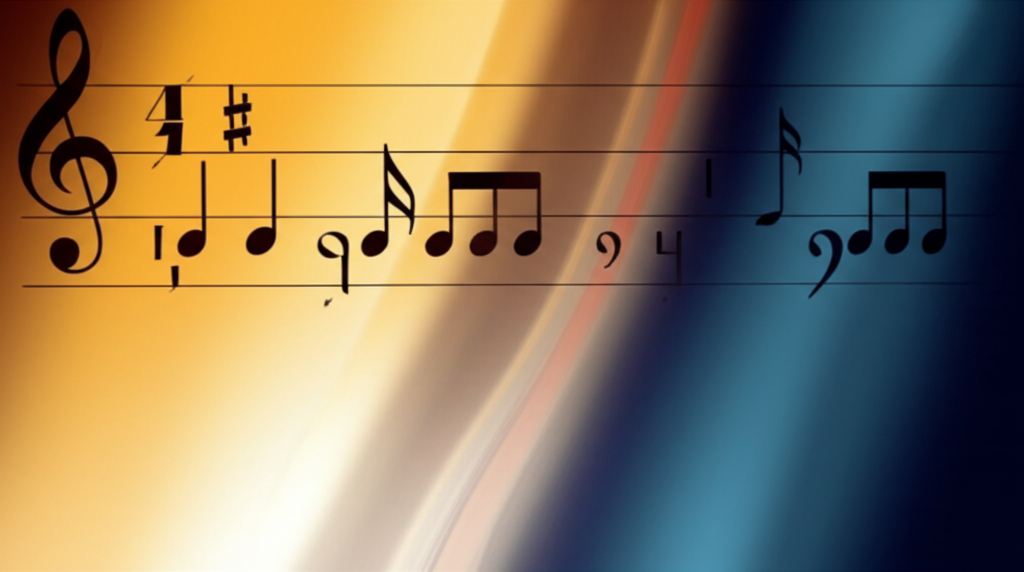Summary:
The 12-bar blues is the most important and influential chord progression in the history of American popular music. This foundational harmonic cycle, built on the I, IV, and V chords, has served as the architectural blueprint for countless songs across blues, jazz, R&B, rock and roll, and country. Its elegant balance of tension and resolution provides a versatile framework for songwriting, improvisation, and musical communication.
Keywords:
12-bar blues, blues progression, I-IV-V, dominant 7th chords, blues form, AAB structure, turnaround, blues changes, American music, harmonic framework, music theory, improvisation, songwriting.
Introduction: What is the 12-Bar Blues?
At its core, the 12-bar blues is a specific chord progression that repeats over a cycle of 12 measures, or "bars." This deceptively simple framework has been the launchpad for a century of musical innovation, evolving from the raw expression of Delta blues to the sophisticated language of modern jazz and the driving force of rock and roll.
Understanding the 12-bar blues is not just a music theory exercise; it's a key that unlocks the structure of thousands of familiar songs. This guide will provide a comprehensive overview of its structure, history, variations, and enduring legacy, offering practical examples for musicians and deep insights for avid listeners.
The Basic Structure: I-IV-V
The standard 12-bar blues is built using the three most fundamental chords in a key: the I (tonic), the IV (subdominant), and the V (dominant). A defining characteristic of the blues is that these chords are almost always played as dominant 7th chords (e.g., C7, F7, G7). This adds a "blue note" (the flat seventh) to each chord, creating a signature sound full of tension and soul.
Here is the most common harmonic pattern in the key of C:
Bars 1-4: I7 | I7 | I7 | I7 (Four bars of the tonic chord, establishing home base)
Bars 5-6: IV7 | IV7 (Two bars of the subdominant, creating movement)
Bars 7-8: I7 | I7 (Two bars returning to the tonic)
Bars 9-10: V7 | IV7 (The V chord creates strong tension, which is partially resolved by the IV)
Bars 11-12: I7 | V7 (The "turnaround," which leads back to the beginning)
Example: Basic 12-Bar Blues in C
This musical example shows the basic chord progression with dominant 7th chords, notated as whole notes for clarity. The chord symbols above the staff show the harmony for each measure.

Historical Development
The 12-bar blues form didn't emerge fully formed. It crystallized in the late 19th and early 20th centuries from African American oral traditions like work songs, field hollers, and spirituals. These forms often featured call-and-response patterns, which laid the groundwork for the AAB lyrical structure of the blues. Early rural styles like the Delta blues, pioneered by artists like Charley Patton and Robert Johnson, solidified the 12-bar structure. As musicians migrated to cities, the form was adapted for full bands in the electric Chicago and Texas blues styles. Its robust and flexible nature made it a perfect vehicle for jazz improvisation, a foundational block for early rock and roll, and a continuous influence on modern music.
Harmonic Analysis: Why It Works
Roman Numeral Analysis: I7 - IV7 - V7
The progression's power lies in its clear, logical movement:
- I7 chord (Tonic) : Provides the harmonic "home." In traditional harmony, the tonic is usually a major chord. Using a dominant 7th chord here is a defining feature of the blues, immediately establishing a "bluesy" sound.
- IV7 chord (Subdominant): Moving from I to IV is a move by a perfect fourth, creating a sense of lift and gentle departure from the tonic.
- V7 chord (Dominant): The V7 chord contains the leading tone of the key, creating powerful harmonic tension that desperately wants to resolve back to the I chord. This V7-I7 resolution provides the satisfying conclusion to the musical phrase.
The Power of the Dominant 7th
The magic of the blues progression comes from using dominant 7th chords for the I, IV, and V. Each dominant 7th chord contains a tritone (an interval of three whole steps) between its 3rd and 7th degrees. This interval is inherently dissonant and creates a need for resolution. By using it on every primary chord, the blues maintains a constant level of harmonic tension and color that propels the music forward and gives it its characteristic restless, soulful quality.
Common Variations
While the basic form is foundational, countless variations exist. Here are a few essential ones:
Quick Change (or Quick to the Four)
To add interest early in the progression, many players move to the IV7 chord in the second bar. This is extremely common in Chicago blues and rock and roll.
I7 | IV7 | I7 | I7 | IV7 | IV7 | I7 | I7 | V7 | IV7 | I7 | V7
Jazz Blues
Jazz musicians enrich the basic blues with more complex harmony, often using secondary dominants, ii-V progressions, and passing chords to create sophisticated melodic possibilities.
C7 | F7 | C7 | Gm7 C7 | F7 | F#dim7 | C7 | A7 | Dm7 | G7 | C7 A7 | Dm7 G7
Minor Blues
Using minor chords creates a darker, more melancholic mood. The structure typically uses the i, iv, and V chords.
Cm7 | Cm7 | Cm7 | Cm7 | Fm7 | Fm7 | Cm7 | Cm7 | Ab7 | G7 | Cm7 | G7
The AAB Lyrical Structure
The 12-bar form is perfectly matched with a three-line lyrical pattern known as AAB. The harmony directly supports the narrative arc of the lyrics:
- A (bars 1-4): A line is stated, typically over the stable I7 chord.
- A (bars 5-8): The same line is repeated, but the harmony moves to IV7, adding new emotional color to the familiar words.
- B (bars 9-12): A new, rhyming line provides a response, resolution, or punchline as the harmony moves through V7-IV7-I7 to conclude the thought.
Example: "Sweet Home Chicago"
"Come on, baby don't you want to go" (A)
"Come on, baby don't you want to go" (A)
"Back to that same old place, my sweet home Chicago" (B)
Famous Songs Using the 12-Bar Blues
The list is nearly endless, but here are a few iconic examples demonstrating its versatility:
- "Sweet Home Chicago" - Robert Johnson (Classic Delta blues)
- "Hound Dog" - Big Mama Thornton / Elvis Presley (Transition to rock and roll)
- "Rock Around the Clock" - Bill Haley & His Comets (Definitive early rock)
- "Pride and Joy" - Stevie Ray Vaughan (Texas-style electric blues)
- "Johnny B. Goode" - Chuck Berry (Blues as the engine of rock narrative)
- "Stormy Monday" - T-Bone Walker (A famous example of a jazz-inflected blues with chord substitutions)
- "Mannish Boy" - Muddy Waters (A variation built on a one-chord riff, showing how the 12-bar feel can persist even with simplified harmony)
Performance Techniques & Examples
The 12-bar blues is a playground for different instrumental approaches.
Bass: The Foundation
The bass player's primary role is to outline the chord changes and lock in the rhythm. A walking bass line is a classic approach that uses notes from the chord and scale to create a smooth, linear motion.
Example: Blues Walking Bass Line in C
Piano: Rhythm and Color
Blues piano often features a busy left hand playing a rhythmic pattern like a boogie-woogie bass line, while the right hand plays chords and melodic fills. This creates a full, self-contained sound.
Example: Boogie-Woogie Pattern in C

Guitar: Rhythm and Lead
Rhythm guitarists often play a "shuffle" feel, emphasizing beats 2 and 4. Lead guitarists use scales like the minor and major pentatonic scales (often blended together to create the "blues scale") to improvise melodies, using techniques like string bending and vibrato to create vocal-like expressions.
The Turnaround: Resetting the Cycle
The final two bars (11 and 12) are crucial. This section, known as the "turnaround," builds tension to propel the listener back to the beginning of the 12-bar cycle. While the simplest turnaround is I-V, musicians often insert more complex chords to create a stronger pull back to the tonic. A common jazz-influenced turnaround is the I-vi-ii-V progression.
Example: I-vi-ii-V Turnaround (Bars 11-12)

Learning and Practice Tips
For Beginners:
- Internalize the Form: Clap, sing, or count through the 12-bar cycle until you can feel it without thinking. Use a metronome.
- Start with Basic Chords: Learn the I, IV, and V chords in several keys (C, G, A, and E are common) .
- Listen Actively: Put on a classic blues album and try to identify the chord changes as they happen.
For Intermediate Players:
- Master Dominant 7ths: Practice smooth transitions between I7, IV7, and V7 chords.
- Explore Variations: Integrate the "quick change" and other common variations into your playing.
- Improvise with Purpose: Instead of just running scales, try "chord-tone targeting"—landing on notes of the current chord on strong beats to outline the harmony.
- Transcribe the Masters: Learn a solo or rhythm part from a B.B. King or Muddy Waters record note-for-note.
Cultural Impact and Enduring Legacy
The 12-bar blues is more than a chord progression; it's a cultural touchstone. It provided an accessible, standardized framework that democratized music-making, allowing musicians from different backgrounds to meet and jam together. It was the primary vehicle for African American musical expression in the 20th century, and its DNA is present in nearly every genre of popular music that followed. From the structure of a country song to the sampled bass line in a hip-hop track, the ghost of the 12-bar blues is everywhere.
Conclusion
The 12-bar blues progression is a masterful blend of simplicity and sophistication. Its logical harmonic structure provides a sturdy foundation, while its inherent flexibility invites endless creative exploration. It is a shared language that connects musicians and listeners across genres and generations.
By understanding the 12-bar blues, you gain a deeper appreciation for the art of songwriting, the thrill of improvisation, and the interconnected history of American music. It is a timeless form that continues to prove that within a simple set of rules, infinite expression is possible.
